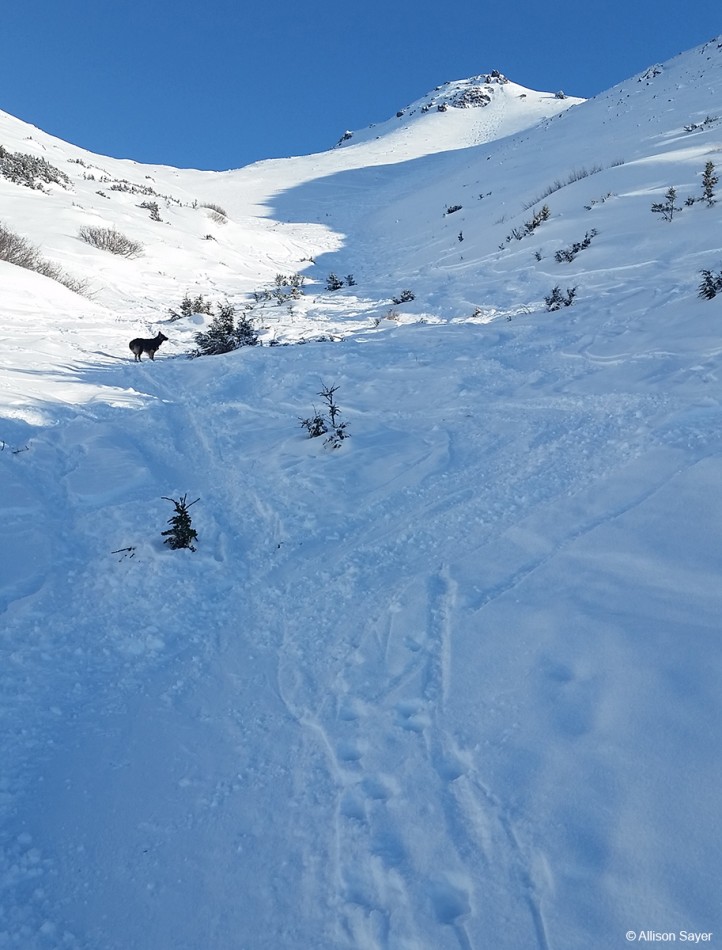The Chugach front range contains many tantalizing looking ski lines. However, many of them are rarely in skiable condition. During some years, snowfall is light. Other years, howling winds or rain clean the snow away as soon as it falls. When everything does come together in the front range, there are endless exciting lines to be had. I feel extremely fortunate to have skied off the summit of The Ramp, Harp Mountain, and several other front range peaks.
The main gully on Peak III provides the most reliable front range skiing, even during marginal years. This gully receives blown in snow, and tends to retain it even when the winds are fierce. Peak III got its name from being the “third peak†over from Flat Top. Skiers typically access the “back†side, the opposite side of the range from the major parking lot and trail up Flat Top Mountain.
Access is easy from the end of Canyon Road. As the days lengthen in March, many Anchorage area skiers with day jobs head up for quick laps after work.
